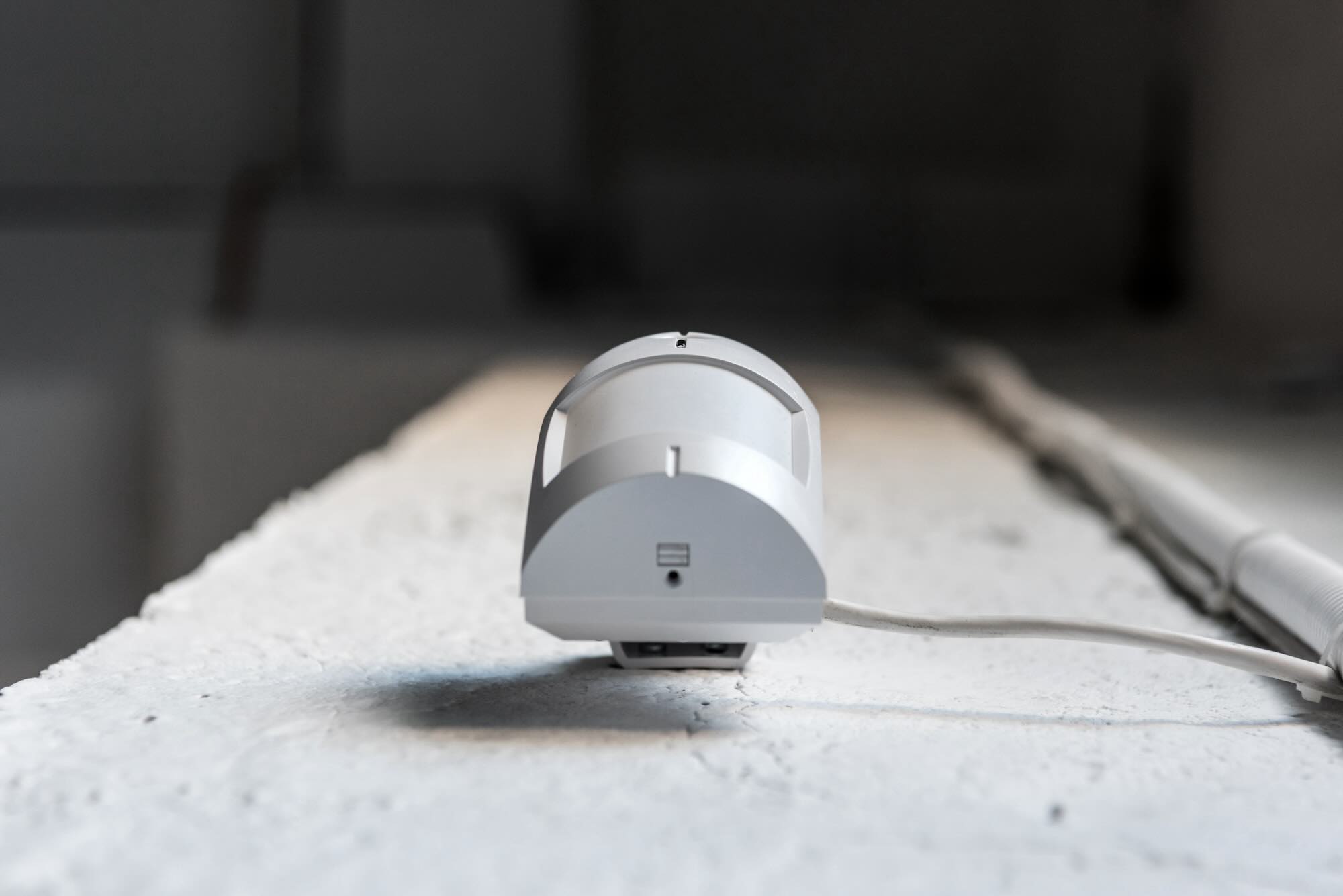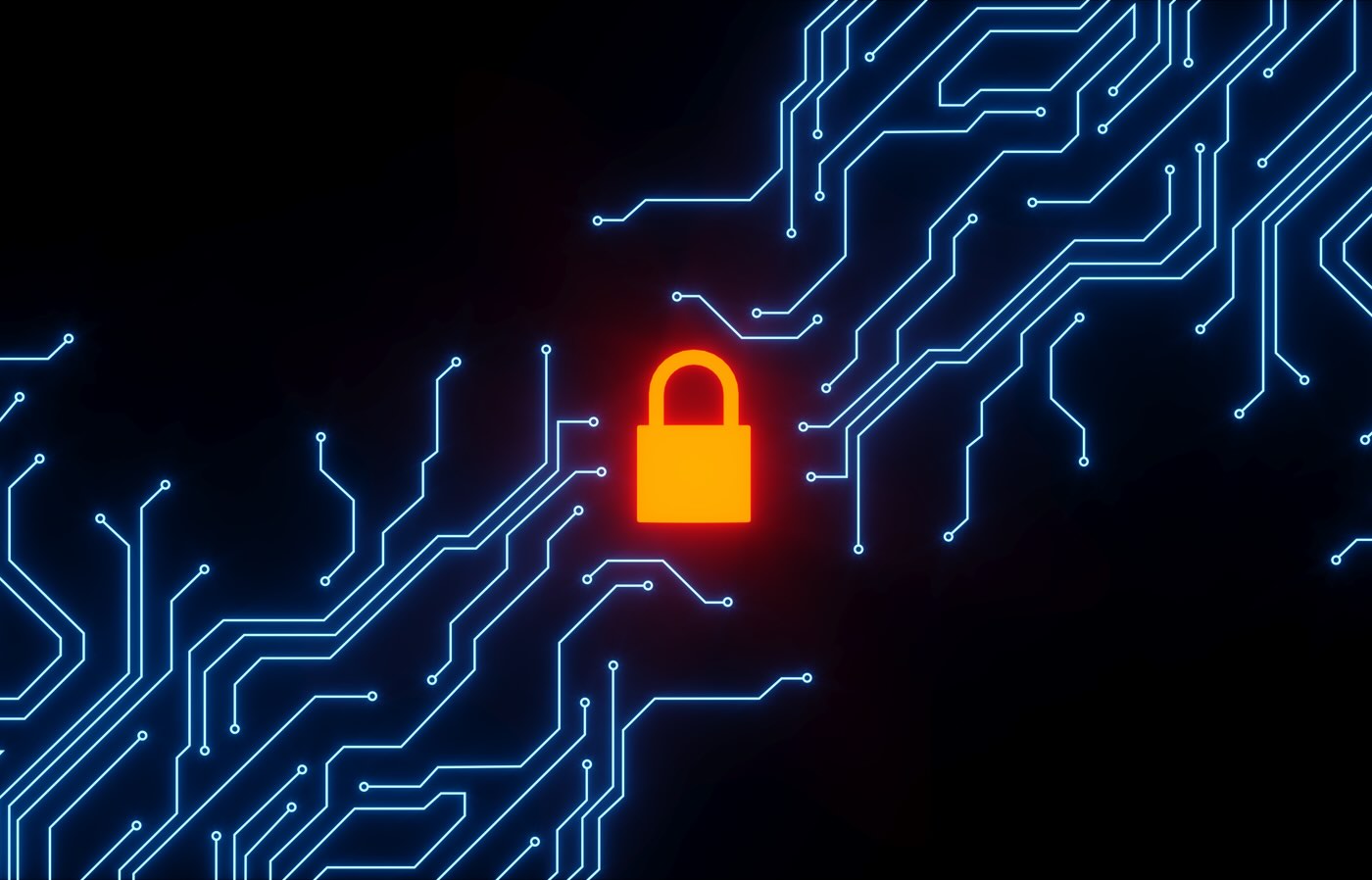Home>Home Security and Surveillance>Why Is Intrusion Detection Necessary In Terms Of The Known Good State


Home Security and Surveillance
Why Is Intrusion Detection Necessary In Terms Of The Known Good State
Modified: March 6, 2024
Learn why intrusion detection is crucial for home security and surveillance in maintaining the known good state. Protect your property and loved ones with effective intrusion detection systems.
(Many of the links in this article redirect to a specific reviewed product. Your purchase of these products through affiliate links helps to generate commission for Storables.com, at no extra cost. Learn more)
Introduction
Welcome to the world of home security and surveillance! In today’s digital age, the protection of our homes and loved ones has become of utmost importance. With advancements in technology, home security systems and surveillance equipment have evolved to provide enhanced levels of safety and peace of mind. One crucial aspect of these systems is intrusion detection, which plays a vital role in safeguarding our homes.
Intrusion detection is the process of monitoring and analyzing the activity within a network or system to identify any unauthorized access. It involves detecting and alerting us of any potential threats or security breaches that could compromise the security of our home.
One effective approach to intrusion detection is utilizing the concept of the “Known Good State.” This refers to establishing a baseline or reference point that represents the normal, expected behavior of our home security system. By continuously monitoring and comparing real-time data against this Known Good State, any deviations or anomalies can be promptly identified and addressed.
In this article, we will delve deeper into the concept of intrusion detection using the Known Good State. We will explore the importance of implementing such a system in protecting our home security, as well as the benefits it offers. Additionally, we will discuss some of the challenges associated with implementing intrusion detection systems based on the Known Good State.
So, whether you are a homeowner looking to enhance your home security or a technology enthusiast interested in the inner workings of intrusion detection, join us as we unlock the secrets of the Known Good State and its role in securing our homes.
Key Takeaways:
- Stay Safe with Known Good State
Intrusion detection using the Known Good State helps keep homes secure by comparing normal behavior with real-time data to spot potential threats early and take action. - Challenges and Benefits of Intrusion Detection
While intrusion detection with the Known Good State offers better security, it also comes with challenges like adapting to system changes and handling false alerts.
Read more: Why Use An Intrusion Detection System
Definition of Intrusion Detection
Intrusion detection is a crucial component of any comprehensive home security system. It involves the surveillance and analysis of network traffic, system logs, and user activities to identify potential threats and unauthorized access attempts. The primary objective of intrusion detection is to detect and respond to security incidents promptly.
There are two main types of intrusion detection systems: network-based intrusion detection systems (NIDS) and host-based intrusion detection systems (HIDS).
Network-based intrusion detection systems (NIDS) monitor network traffic and analyze packet data to identify any suspicious or malicious activity. These systems operate at the network level, inspecting incoming and outgoing packets to detect potential intrusions or attacks. NIDS can be placed at various points within the network infrastructure, such as at the perimeter or within specific segments, to provide comprehensive coverage.
Host-based intrusion detection systems (HIDS) operate at the individual device or host level. They monitor the activity on a specific device, such as a computer or server, and analyze system logs and file integrity to detect any signs of intrusion. HIDS can identify both external attacks and insider threats, providing a more granular level of security.
The Known Good State is a fundamental concept within intrusion detection. It involves establishing a baseline or reference point that represents the normal behavior of a system or network. This baseline is created by recording and analyzing the activities, configurations, and behaviors of a system during a known secure state. Any deviations from this Known Good State can indicate potential security incidents or unauthorized access attempts.
Intrusion detection systems utilize various techniques to identify potential threats or anomalies. These techniques include signature-based detection, which compares network or system activity against a database of known attack signatures, and anomaly-based detection, which looks for deviations from the normal behavior of a system or network.
It is essential for an intrusion detection system to not only detect potential threats but also provide timely and accurate alerts or notifications. These alerts can be sent to system administrators, security personnel, or even to home occupants, ensuring prompt action can be taken to mitigate any potential security risks.
Overall, intrusion detection is a critical aspect of home security, providing an additional layer of protection to safeguard our homes and loved ones. By implementing intrusion detection systems based on the Known Good State, we can proactively detect and respond to potential security incidents, ensuring a safe and secure living environment.
Explaining the Known Good State
The concept of the Known Good State is a fundamental principle in intrusion detection systems. It involves establishing a baseline or reference point that represents the normal, expected behavior of a system or network. By understanding what is considered “normal,” any deviations or anomalies can be identified and flagged as potential security incidents.
To create a Known Good State, the system administrator or security personnel must thoroughly analyze and document the behavior, configurations, and activities of the system during a known secure state. This can include capturing information such as network traffic patterns, software versions, user access privileges, and system logs. By recording these parameters, a baseline is formed that defines the system’s expected behavior in terms of both network and device activity.
Once the Known Good State is established, it can be used as a reference point for ongoing intrusion detection. The system continuously compares real-time data and activities against this baseline to identify any deviations. For example, if the system detects network traffic patterns that differ significantly from the baseline, it may raise an alert indicating a potential security incident.
Utilizing the Known Good State brings several advantages to intrusion detection systems. Firstly, it allows for a more accurate identification and classification of potential threats. By understanding what constitutes normal behavior, the system can distinguish between legitimate activities and malicious actions more effectively. This reduces false positives and ensures that security personnel can focus their attention on genuine threats.
Secondly, the Known Good State provides a proactive approach to intrusion detection. Instead of solely relying on signature-based detection or waiting for specific attack patterns to be identified, the system continuously monitors for any deviations from the baseline. This enables the detection of unknown or zero-day attacks, as the system is not solely dependent on known attack signatures.
Additionally, the Known Good State allows for faster incident response and remediation. As the system promptly flags any deviations, security personnel can take immediate action to investigate and mitigate potential security breaches. This can include deploying additional security measures, isolating affected devices or segments, or notifying law enforcement authorities if necessary.
However, it is important to note that establishing and maintaining the Known Good State can be a complex and challenging process. It requires a deep understanding of the system’s normal behavior and ongoing monitoring and analysis to adapt to changes in network and device configurations. Any updates, patches, or changes in the system must be carefully evaluated and documented to ensure the accuracy of the Known Good State.
Overall, the Known Good State is a crucial concept in intrusion detection, providing a baseline for comparison and identifying potential security incidents. By continuously monitoring and analyzing real-time data against the Known Good State, intrusion detection systems can proactively protect our homes and provide a higher level of security.
Importance of Intrusion Detection
As technology continues to advance, the importance of intrusion detection in home security and surveillance cannot be overstated. Intrusion detection plays a vital role in protecting our homes from potential threats and unauthorized access. Here are some key reasons why intrusion detection is essential:
- Early Threat Detection: Intrusion detection systems are designed to identify potential security incidents in their early stages. By detecting and alerting us to suspicious activities or unauthorized access attempts, these systems allow for proactive intervention before any significant damage or loss occurs.
- Enhanced Home Security: Home security systems are the first line of defense against intruders. Intrusion detection adds an additional layer of protection to these systems by monitoring network traffic, system logs, and user activities. This ensures that any attempts to breach the security of our homes can be promptly detected and addressed.
- Real-Time Monitoring: Intrusion detection systems provide real-time monitoring of our home security infrastructure. This means that we can have constant visibility into the activities happening within our systems, allowing us to take immediate action in response to any potential security risks.
- Identification of Insider Threats: Intrusion detection not only detects external threats but can also identify insider threats. These can include unauthorized access attempts by individuals within our trusted circle, such as family members, friends, or employees. By monitoring user activities and analyzing system logs, intrusion detection systems can flag any suspicious behaviors and help identify potential insider threats.
- Compliance with Security Standards: Many industries and organizations have specific security standards and regulations that must be adhered to. Intrusion detection systems help ensure compliance by continuously monitoring and analyzing security-related events, activities, and configurations. This helps to demonstrate proactive efforts in safeguarding our homes and can prevent potential legal and financial repercussions.
Overall, intrusion detection plays a critical role in home security and surveillance. It allows us to detect, identify, and respond to potential security incidents promptly, ensuring the safety of our homes and loved ones. By implementing effective intrusion detection systems, we can enjoy peace of mind knowing that our homes are well-protected against threats and unauthorized access attempts.
Regularly updating and maintaining an intrusion detection system is necessary to ensure that any deviations from the known good state can be quickly identified and addressed, helping to protect against unauthorized access and potential security breaches.
Benefits of Utilizing the Known Good State
The utilization of the Known Good State in intrusion detection systems offers several significant benefits. By establishing a baseline of normal behavior and continuously monitoring for deviations, the Known Good State enhances the effectiveness and efficiency of home security and surveillance. Here are some key benefits of utilizing the Known Good State:
- Accuracy in Threat Detection: By comparing real-time data against the Known Good State, intrusion detection systems can accurately distinguish between normal activities and potential security breaches. This reduces false positives, ensuring that security personnel can focus their attention on genuine threats and take prompt action.
- Proactive Security Measures: The Known Good State enables a proactive approach to security. Instead of solely relying on signature-based detection or known attack patterns, intrusion detection systems based on the Known Good State continuously monitor for any deviations. This allows for the detection of previously unknown or zero-day attacks, ensuring early intervention and mitigating potential risks.
- Faster Incident Response: Detecting deviations from the Known Good State triggers immediate alerts or notifications, enabling security personnel to initiate a rapid incident response. By promptly identifying and addressing potential security incidents, the impact can be minimized, and appropriate remedial actions can be deployed to restore the security of our homes.
- Improved Adjustability to System Changes: Home security systems and networks are dynamic, often experiencing changes in configurations, software updates, and user behavior. By continually monitoring deviations from the Known Good State, intrusion detection systems can adapt to these changes and maintain accurate threat detection capabilities. This flexibility ensures the system remains effective, even as our home security infrastructure evolves.
- Identification of Insider Threats: The Known Good State allows for the detection of insider threats, including unauthorized access attempts by individuals within our trusted circle. By establishing a baseline of normal user activities, any deviations or suspicious behaviors can be flagged and investigated. This proactive approach helps identify potential insider threats and protects against unauthorized access attempts from within our homes.
- Compliance with Security Standards: Utilizing intrusion detection systems based on the Known Good State helps ensure compliance with industry standards and security regulations. By continuously monitoring and analyzing security-related events and activities, these systems provide a documented and proactive approach to securing our homes. This can be crucial for industries and organizations that must adhere to specific security guidelines.
Overall, the utilization of the Known Good State in intrusion detection systems enhances the accuracy, proactivity, and effectiveness of home security and surveillance. It allows for timely threat detection, faster incident response, and protection against both external and insider threats. By continuously monitoring and analyzing activities against the Known Good State, we can ensure the safety and security of our homes and loved ones.
Challenges in Implementing Intrusion Detection with the Known Good State
While the utilization of the Known Good State in intrusion detection systems offers numerous benefits, there are several challenges that can arise during its implementation. These challenges need to be carefully addressed to ensure the seamless and effective functioning of the intrusion detection system. Here are some common challenges in implementing intrusion detection with the Known Good State:
- Establishing an Accurate Baseline: Creating an accurate Known Good State requires a comprehensive understanding of the normal behavior and activities of the system. This necessitates extensive monitoring and analysis during a known secure state. Gaining this level of insight can be time-consuming and resource-intensive, particularly for complex home security systems with multiple interconnected devices and networks.
- Adapting to System Changes: Home security systems are not static and frequently undergo changes such as software updates, network reconfigurations, or the addition/removal of devices. These changes can affect the normal behavior of the system and may require updates to the Known Good State. Ensuring the intrusion detection system can adapt and accurately reflect these changes is crucial for maintaining effective threat detection.
- Defining Acceptable Deviations: While the Known Good State serves as a baseline for normal behavior, it is important to account for permissible deviations. Some system activities may fall within an acceptable range of variations due to legitimate reasons. Fine-tuning the intrusion detection system to accurately differentiate between abnormal and acceptable deviations can be challenging and requires a deep understanding of the system’s operational characteristics.
- Handling False Positives and False Negatives: Intrusion detection systems based on the Known Good State can sometimes produce false positives (flagging normal activities as potential threats) or false negatives (failing to identify genuine security incidents). Balancing the detection sensitivity to minimize false positives, while still capturing genuine threats, is a continuous challenge. Striking the right balance ensures that security personnel’s attention is focused on real security incidents and reduces the risk of overlooking potential threats.
- Maintaining the Known Good State: The Known Good State is not a one-time effort, but an ongoing process. It requires continuous monitoring, analysis, and documentation to keep it accurate and up to date. System updates, patches, and changes in network configurations must be carefully evaluated and incorporated into the Known Good State to avoid false alarms or missed alerts. Routine maintenance and regular audits are necessary to ensure the integrity of the Known Good State.
- Resource Requirements: Implementing intrusion detection systems based on the Known Good State can require significant computational resources. Monitoring and analyzing network traffic, system logs, and user activities in real-time demand processing power and storage capabilities. Additionally, the continuous observation and comparison against the Known Good State can add to the computational load. Adequate resource allocation should be considered to avoid performance issues and system bottlenecks.
By understanding and addressing these challenges, we can optimize the implementation of intrusion detection systems based on the Known Good State. While they may present initial roadblocks, overcoming these challenges ensures a robust and effective security infrastructure that can protect our homes and loved ones from potential threats.
Conclusion
Intrusion detection systems based on the concept of the Known Good State have become indispensable in today’s world of home security and surveillance. By continuously monitoring and analyzing network traffic, system logs, and user activities, these systems provide an additional layer of protection to safeguard our homes and loved ones.
Throughout this article, we explored the importance of intrusion detection in home security. We discussed the definition of intrusion detection and its two primary types: network-based intrusion detection systems (NIDS) and host-based intrusion detection systems (HIDS). We also delved into the concept of the Known Good State, which involves the establishment of a baseline of normal behavior to detect deviations or anomalies.
The benefits of utilizing the Known Good State in intrusion detection systems are significant. They include more accurate threat detection, proactive security measures, faster incident response, improved adjustability to system changes, identification of insider threats, and compliance with security standards. By continuously monitoring activities against the Known Good State, we can enhance the safety and security of our homes.
However, implementing intrusion detection with the Known Good State does come with its challenges. These challenges include establishing an accurate baseline, adapting to system changes, defining acceptable deviations, handling false positives and false negatives, maintaining the Known Good State, and addressing resource requirements. By effectively addressing these challenges, we can maximize the effectiveness of intrusion detection systems.
In conclusion, intrusion detection with the Known Good State is vital for maintaining the security and integrity of our homes. The constant monitoring and analysis of network and system activities allow us to detect potential threats at an early stage, leading to prompt response and mitigation. By implementing effective intrusion detection systems, we can enjoy peace of mind, knowing that our homes and loved ones are protected from potential security breaches.
Frequently Asked Questions about Why Is Intrusion Detection Necessary In Terms Of The Known Good State
Was this page helpful?
At Storables.com, we guarantee accurate and reliable information. Our content, validated by Expert Board Contributors, is crafted following stringent Editorial Policies. We're committed to providing you with well-researched, expert-backed insights for all your informational needs.














